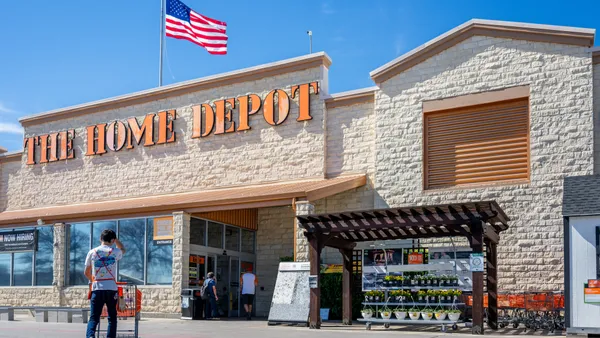Dive Brief:
-
Lululemon on Wednesday announced it was raising its full-year guidance after notching net revenue of $916.1 million, a 23% increase over the year-ago quarter. Net income was $126 million, up 33% from last year, according to a company press release.
-
Total comparable sales at the athleisure brand were up 16%, while direct-to-consumer net revenue increased 29% and made up 26.9% of total revenue. Operating income was also up 29%, reaching $175.8 million, while operating margin was 19.2%, an increase of 100 basis points.
-
Gross profit was up 24% to $505 million and gross margin increased by 70 basis points to 55.1%. The retailer opened a net of 19 stores in the quarter, ending with 479 total locations. Since the year-ago quarter, the retailer has opened a net of 53 new stores, according to a filing with the Securities and Exchange Commission.
Dive Insight:
Just days before Lululemon's third quarter earnings report, the brand announced that Chief Operating Officer Stuart Haselden would be leaving the company in January — as it turns out, he's set to take over the CEO spot at luggage brand Away.
Haselden was also the head of Lululemon's international business, but CEO Calvin McDonald assured analysts on a conference call Wednesday that the business was in good hands going forward. "Our regional leadership structure remains in place and the teams will continue to execute against our growth plans," he said, according to a Seeking Alpha transcript.
Executives also gave an update on the brand's five-year plan, which includes annual growth in the low double-digits, as well as doubling men's and digital, and quadrupling its international business. As proof of the brand's progress, McDonald pointed to 38% revenue growth in men's in the quarter, the largest increase of the year, and he noted men's "continues to be very strong."
Digital comps also increased 30%, Chief Financial Officer PJ Guido said on the call, and the unit contributed $247 million of revenue, or close to 27%.
Outside of executing on long-term goals, executives also discussed short-term wins like the launch of BOPIS in "nearly all of our North American stores," plans for increased distribution of its self-care line (which now features a few third-party products as well), and the debut of its experiential megastore in Mall of America, the second of its kind following one launched in Chicago over the summer. The Chicago store was so successful that the brand has begun testing its membership program in that market, which is producing a "halo effect" across the market.
The brand's largest store, at 23,000 square feet, also opened in the quarter — on Fifth Avenue in New York. These larger, more experiential formats have the potential to make up 10% of the retailer's footprint in the future, and shoppers have been "eager to participate" in the brand's events, according to McDonald.
"We are very encouraged, and as we look towards 2020, we are planning on a broader roll out for next year and … our intention is to take these learnings and develop the program and expand it into more cities next year," McDonald said.
Also key to the brand's physical strategy, especially over the holidays, is its fleet of seasonal stores, which will total about 50 in Q4. According to execs, 30% of transactions at those stores are from new shoppers, and they prove a low-cost way of testing new markets for the brand.














